
Add the General description for teachers to see. And resource added in the "Add Resource" will be for the teacher only.
- Subject:
- Educational Technology
- Material Type:
- Lesson Plan
- Author:
- Denise Krefting
- Date Added:
- 03/16/2017

Add the General description for teachers to see. And resource added in the "Add Resource" will be for the teacher only.
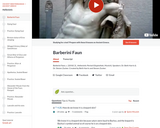
Barberini Faun, c. 220 B.C.E., Hellenistic Period (Glyptothek, Munich). Speakers: Dr. Beth Harris & Dr. Steven Zucker. Created by Beth Harris and Steven Zucker.
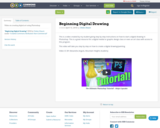
Video on creating digital art using Photoshop
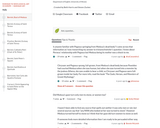
This art history video discussion examines Gian Lorenzo Bernini's "Bust of Medusa," marble, c. 1644-48 (Capitoline Museum).
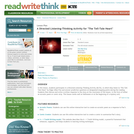
What's that sound? Students participate in a Directed Listening-Thinking Activity (DLTA) using "The Tell-Tale Heart," make predictions, and respond in the form of an acrostic poem or comic strip.

The 12th grade learning experience consists of 7 mostly month-long units aligned to the Common Core State Standards, with available course material for teachers and students easily accessible online. Over the course of the year there is a steady progression in text complexity levels, sophistication of writing tasks, speaking and listening activities, and increased opportunities for independent and collaborative work. Rubrics and student models accompany many writing assignments.Throughout the 12th grade year, in addition to the Common Read texts that the whole class reads together, students each select an Independent Reading book and engage with peers in group Book Talks. Language study is embedded in every 12th grade unit as students use annotation to closely review aspects of each text. Teacher resources provide additional materials to support each unit.

The laws that govern and the social norms that regulate society are not always fair, legal, moral, or ethical. What is a person to do about all this injustice? What are the hazards of righting injustices or changing social norms? And what are the dangers of doing nothing?
ACCOMPLISHMENTS
Students read and annotate Antigone, “Letter from a Birmingham Jail,” and Pygmalion.
Students write a literary analysis showing the effect of social class or the law on a character’s life.
GUIDING QUESTIONS
These questions are a guide to stimulate thinking, discussion, and writing on the themes and ideas in the unit. For complete and thoughtful answers and for meaningful discussions, students must use evidence based on careful reading of the texts.
How do social class and legal institutions shape literary characters’ lives (and presumably our lives)?
How does social class affect a person in dealing with the law (protect a person, hurt a person)?
How is social class determined in America and in other places in the world?
BENCHMARK ASSESSMENT: Cold Read
During this unit, on a day of your choosing, we recommend you administer a Cold Read to assess students’ reading comprehension. For this assessment, students read a text they have never seen before and then respond to multiple-choice and constructed-response questions. The assessment is not included in this course materials.

In this lesson, students look at “Letter from a Birmingham Jail” again, focusing on Dr. King’s writing style. Then students will try to write a paragraph using his style of repeating passages or phrases to build a convincing argument.

This is a SoftChalk lesson reviewing the figurative language terms simile, metaphor, personification, imagery, and symbolism.
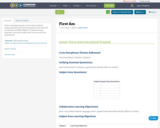
This is an integrated mini-unit in which students explore dystopian literature through the lens of the U.S. Constitution and Bill of Rights. It combines math, literature, and social studies with a focus on the First Amendment.
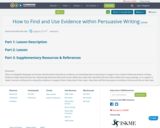
This is an English language arts lesson and the lesson introduces evidence as something that is necessary to support your claims within persuasive writing. Evidence helps demonstrate the relationship between ideas and words within the claim that should be the key ideas within the essay, passage, or to support a claim. Learners will practice using this evidence to support their claim about their topic, then they will find one piece of evidence from an article on that topic.
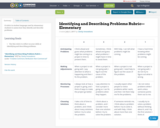
A rubric in student language used by elementary students to assess how they identify and describe problems.

This lesson provides review of chemical formulas, prior to introducing balanced chemical equations. Writing word equations is also introduced in this lesson.
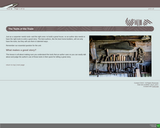
This lesson was designed for English 9 students as an introduction to literary devices at the beginning of a short stories unit. The ultimate goal will be that students can analyze a story, explaining how an author uses these devices to create literature, but this lesson specifically focuses on domain-specific vocabulary.
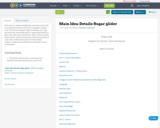
This lesson is aimed at finding the main idea and details in an informational text. The text is at grade C reading level. The learner should be able to identify, sort, state and write the central idea and it’s supporting details in a given text. The terms central idea, theme, thesis, mainly about, will be used as synonymous with the main idea of a text. The students will create a brochure/flyer, conduct research and build fluency during the course of this lesson.
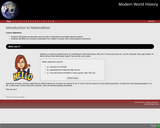
This lesson is an introduction to the concept of nationalism in modern world history.

This presentation describes the characters, plot, setting, foreshadowing examples, as well as numerous motifs of the play. In addition, there is an attached Romeo and Juliet word search, as well as comprehension questions for your students to answer as they are reading.
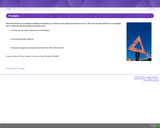
General overview of why and how to apply the triangle congruency shortcuts.